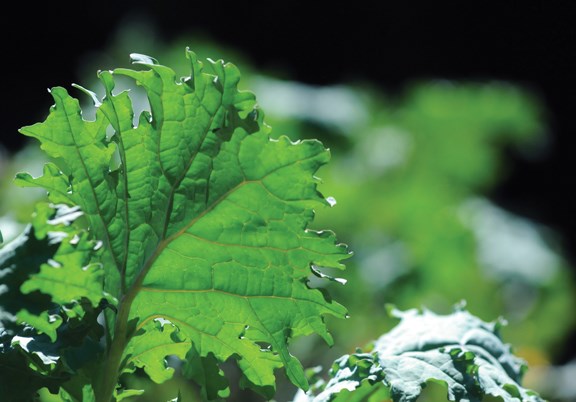The unusually dry summer has left some planting projects sitting on the drawing board waiting for fall rains to provide cooler conditions and salvation from the drought.
But wait no longer if you’re a veggie gardener because timing is everything when it comes to planting.
Winter gardening is not a widely practiced art in our region with many gardeners simply planting a few tulips and some pansies and calling it a season. Veggie gardening during fall and winter is not only possible in our region, it can be highly productive if you start early. Traditionally, winter vegetable crops are seed-sown in August which allows time for germination, growth and establishment before winter. Early establishment of winter vegetables is critical if you actually want to have something to harvest during winter.
Later sowings and plantings will still grow and establish but the harvest is usually smaller than earlier rotations. If you can’t or don’t want to sow seeds, try to buy pre-grown veggies from garden centres or farms.
When I started out in horticulture, my journeyman training was provided by an expert German journeyman named Peter Timm. Along with a landscape construction business, his large property supported an ornamental field nursery, a composting operation, a greenhouse, and a large vegetable garden.
Each summer in late-August during breaks in the landscape construction season, we worked in his veggie garden and greenhouse sowing seeds of carrots, spinach, kale and several types of greens like arugula. But his favourite plant for fall planting was kohlrabi which is a large above-ground vegetable that tastes similar to turnip or parsnip. Kohlrabi is winter hardy and can be harvested well into January.
The lessons of that experience are quite simple: Choose non-GMO, climate suitable and disease resistant varieties to start with. Sow lots of seed to hedge your germination bet.
Choose only the most robust growing seedlings for planting out. Plant out seedlings quickly and protect the seedlings from drying out in the late summer heat by mulching the soil after planting. We used homemade compost for mulch but any organic mulch like leaves, straw or wood chips will work fine.
He also had me install black landscape cloth over top of the soil for crops that need warm soil to establish and for late-season plantings in October. The black cloth attracted heat from the sun which warmed the soil during the day and retained heat at night. This is one of the very few instances where the use of the otherwise useless landscape cloth is desirable in the garden.
Another technique we used for growing winter veggies was to install row covers over some crops. A row cover consists of finely woven fabric, usually white colored but other colours are available for specific uses.
The row cover is installed over top of a crop to prevent pest infestation (example: carrot flies) and to provide a measure of climate protection. Row covers are easily and cheaply supported over the crop using plastic irrigation pipe pushed into the ground and bent over the planting bed to form a low-height support structure for the cover. For cold gardens at higher elevations and so forth, plastic covers can be installed over the crop to keep the rain and frost off the crop to significantly extend the growing season. Plastic must be ventilated during the heat of the day and closed at night to retain heat.
We also used mounded planting beds which allowed the sun’s rays to warm up sides of the planting bed thereby improving plant growth during the waning warmth of fall.
Fall and winter vegetable gardening is not for everyone but it’s also not that difficult once you learn the rhythm of the season. Even the land-less gardener living in an apartment can grow lettuce and radishes in large pots on the balcony or indoors on a windowsill.
A key part of learning how to grow fall and winter vegetables is to choose the right plant for your garden’s conditions and for your skill level. Everyone wants to grow tomatoes, peppers and cucumbers, but you could throw a kale seed on the roadside and the seed would grow. Cucumbers and tomatoes take considerably more skill to grow for harvest. For beginners, people who are time-starved or those with space constraints, I suggest growing easy and rewarding plants such as lettuce, kale or chives. And many perennial herbs like rosemary and sage can be grown and harvested year-round.
Some final advice — skill and technique grow healthy plants, not products. Choose only those additives to the crop that you would consider edible for you or your children. Any additive used for crop growing will be metabolized into plant tissue, or residual on the leaf (i.e. pesticides), so you will be eating the additive.
Todd Major is a journeyman horticulturist, garden designer and builder, teacher and organic advocate. Contact [email protected].



